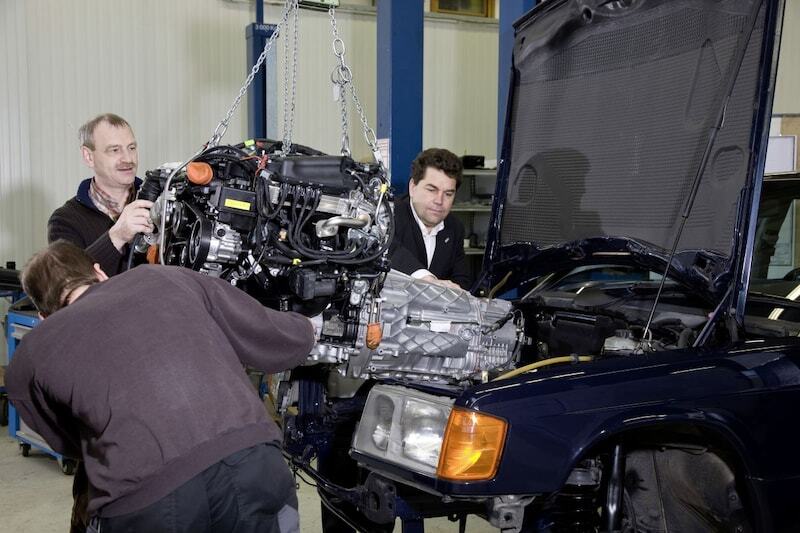
Looking back at the one-off diesel rocket
Installing a modern engine in an old chassis isn’t the first thing you’d expect from a development department. Yet that’s exactly what Mercedes-Benz did. Putting a brand new 2009 diesel engine into a 25-year-old model turns out to deliver incredible performance and fuel consumption figures that would make any fleet manager happy. We experienced it in a Mercedes-Benz 190 D BlueEfficiency. A look back at a one-off diesel rocket.
The result is a car with the looks of yesterday and the performance of today, a perfect illustration of a quarter century of development. To refresh our memory, the original 190 D was equipped with an indirectly injected two-liter four-cylinder with inline pump. This machine delivered 72 hp and 123 Nm. With this, the car was capable of reaching 100 km/h in 18.1 (!) seconds and ultimately reaching a modest top speed of 160 km/h. Oh, and according to the then-applicable NEDC measurement method, it consumed 7.3 liters of diesel per 100 kilometers; all quite normal figures at the time.
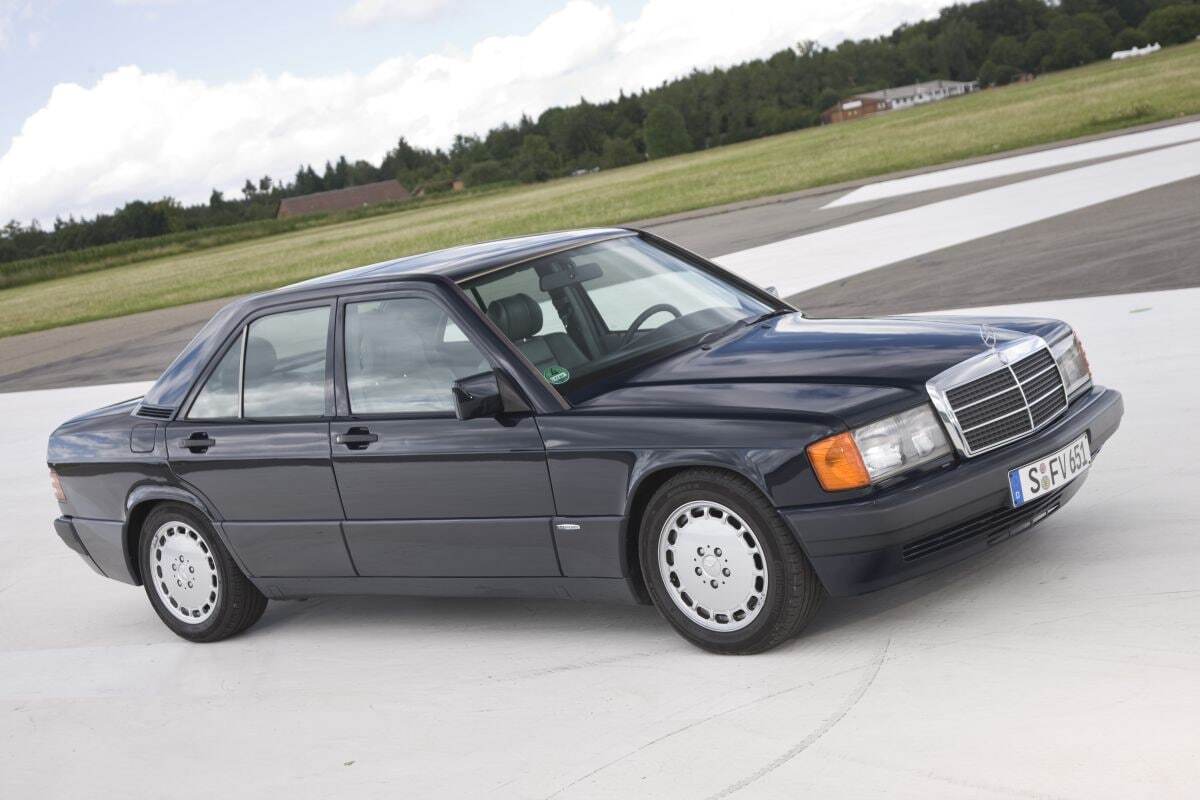
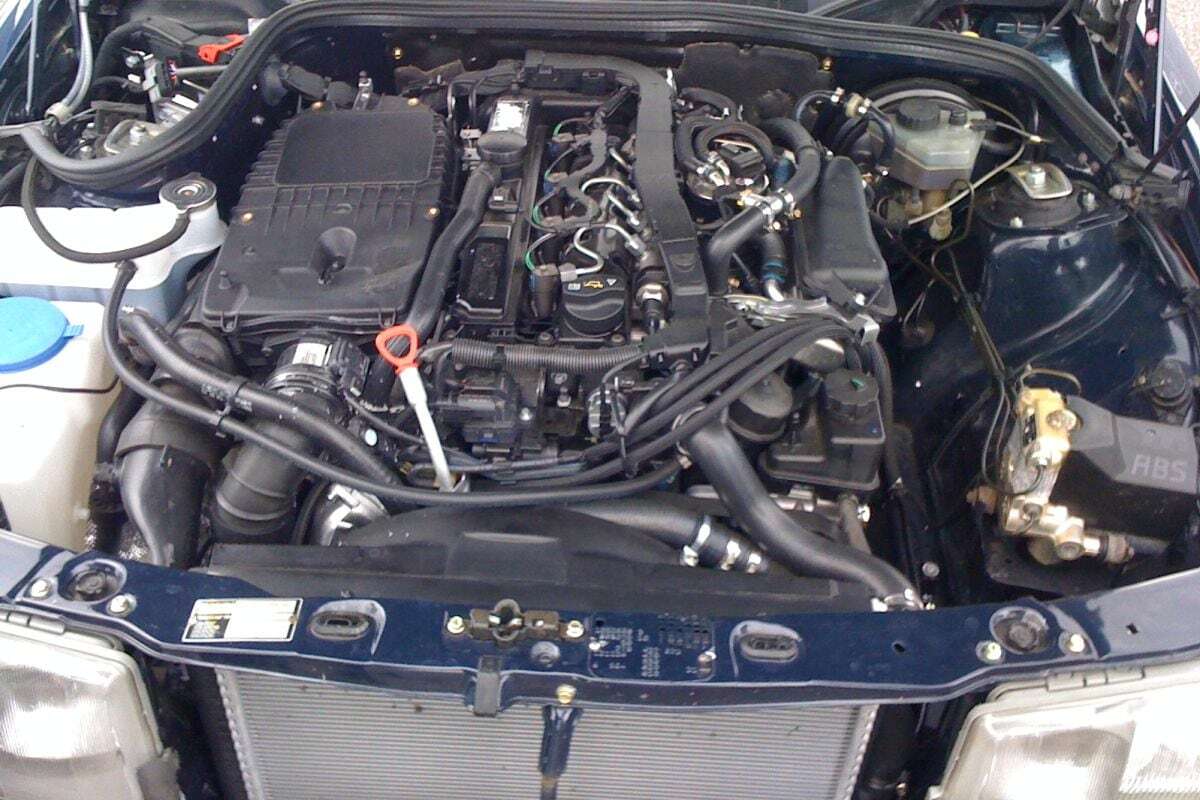
Then the most powerful four-cylinder diesel
The ‘new’ engine is also a four-cylinder, but now with a slightly larger displacement (2,134 cc), a turbo and lots of state-of-the-art diesel technology. With this heart transplant, the old 190 suddenly gets 204 hp and a whopping 500 Nm under the hood. The result is a limited top speed of 240 km/h (same as the C-class). While that’s impressive, what’s completely crushing is the sprint from zero to one hundred, which can now be done in 6.2 seconds. For reference: that’s almost a second faster than the 190 E 2.5-16 Evolution II. That homologation monster from 1990 needed 7.1 seconds for the sprint. And to think that the fuel consumption of the converted diesel has been reduced to 4.9 liters per 100 km.
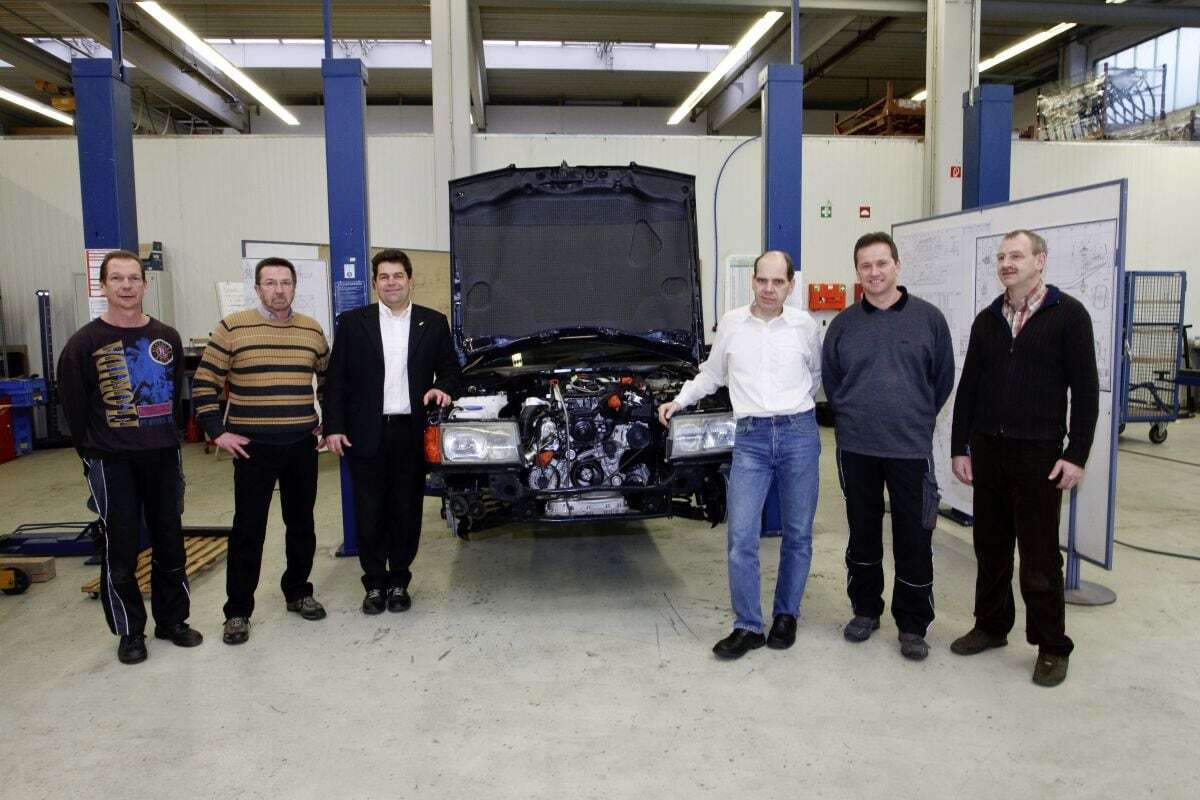
190D turns into rocket
This machine takes off like a beast, pressing us into the creaking, old leather seats during acceleration. Every time we floor the accelerator for an intermediate sprint, it’s a feeling of pure sensation all over again. An insane rocket! The only thing that can temper the enthusiasm is the fact that the chassis and brakes haven’t been adapted. Only the engine, the manual six-speed gearbox and the differential are borrowed from the new C-class; otherwise, pretty much everything about the car is original. That also means an old Becker radio, a storage compartment for cassette tapes in the center console, and of course a very large but also quite thin steering wheel. Furthermore, it’s noticeable how spoiled we are today with insulation material – the new four-cylinder is clearly audible. But that shouldn’t spoil the fun.
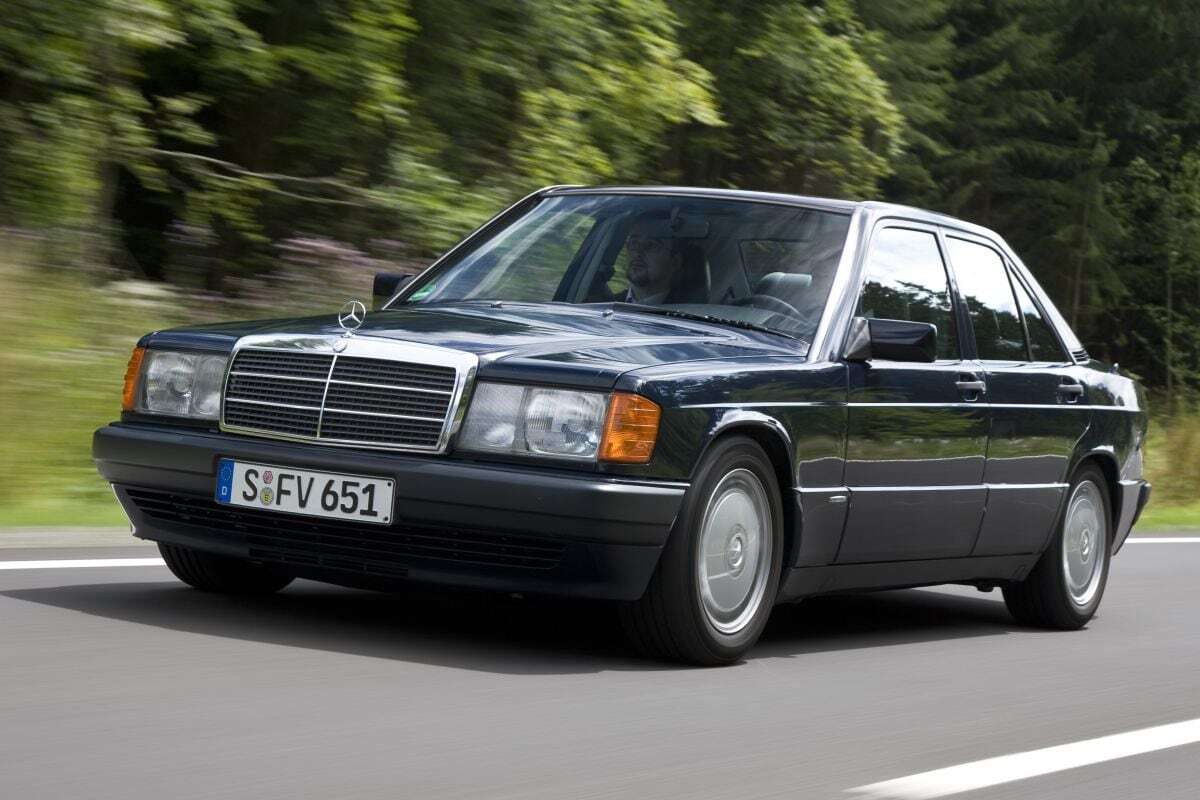
Incidentally, the donor car wasn’t a 190 D but a second-hand purchased 190 E 2.6 Sportline. A deliberate choice, because that car was tuned for the extra weight of a slightly heavier six-cylinder engine and thanks to the Sportline package had a 22 mm lowered and 20% stiffer chassis plus slightly more direct steering. Ideal for the also slightly heavier CDI engine.
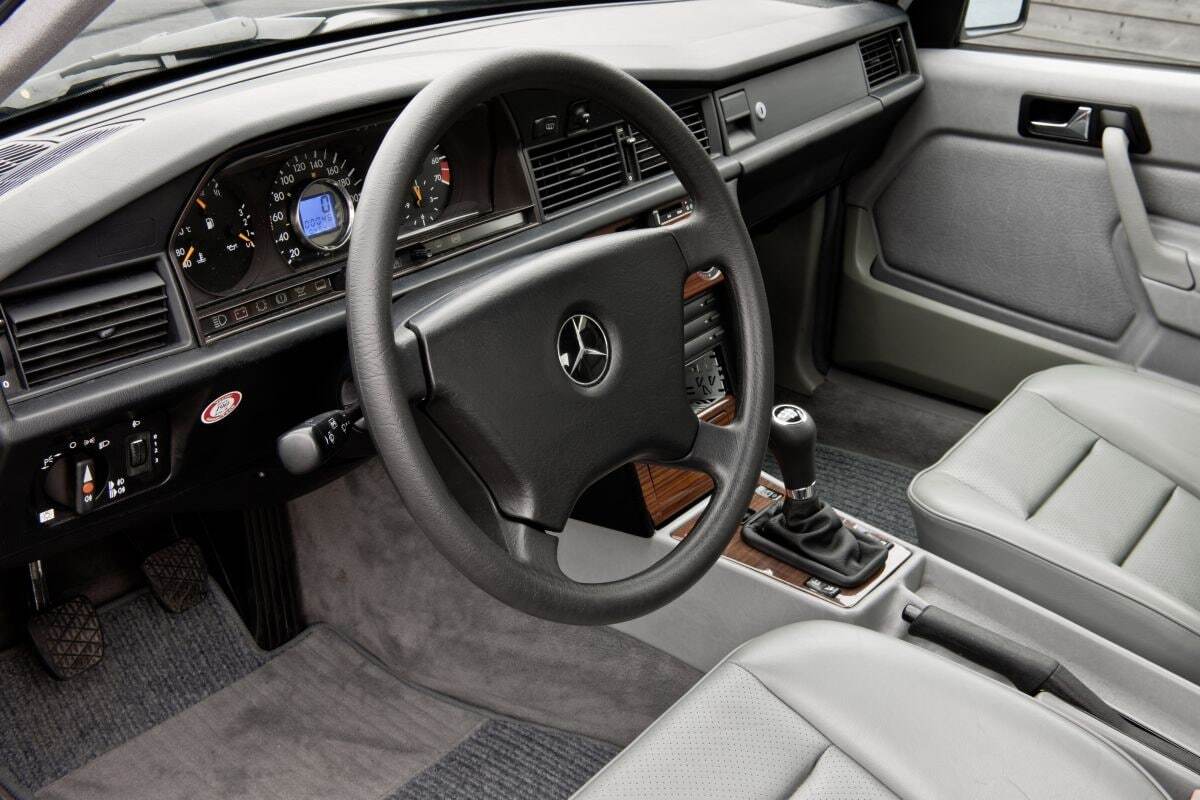
Extra computer in the back of the 190
A modern C-class is a rolling computer, literally packed with electronics. Everything communicates with each other in a large network, including the engine electronics with those of the rest of the car. The 190 had nothing like that at all – just a classic Becker radio and turn signals that worked with relays. That’s why there’s a computer mounted in the trunk of the converted 190 that pretends to be a C-class, or at least makes the engine electronics believe it’s in a modern C-class. Furthermore, the physical transplant was a step back in time for the technicians. Nowadays everything is drawn with computers in CAD programs. But for the 190, only paper drawings were available in the Mercedes-Benz archives – that’s how it was done back then. So it was literally a matter of trial and error to get everything under the hood.
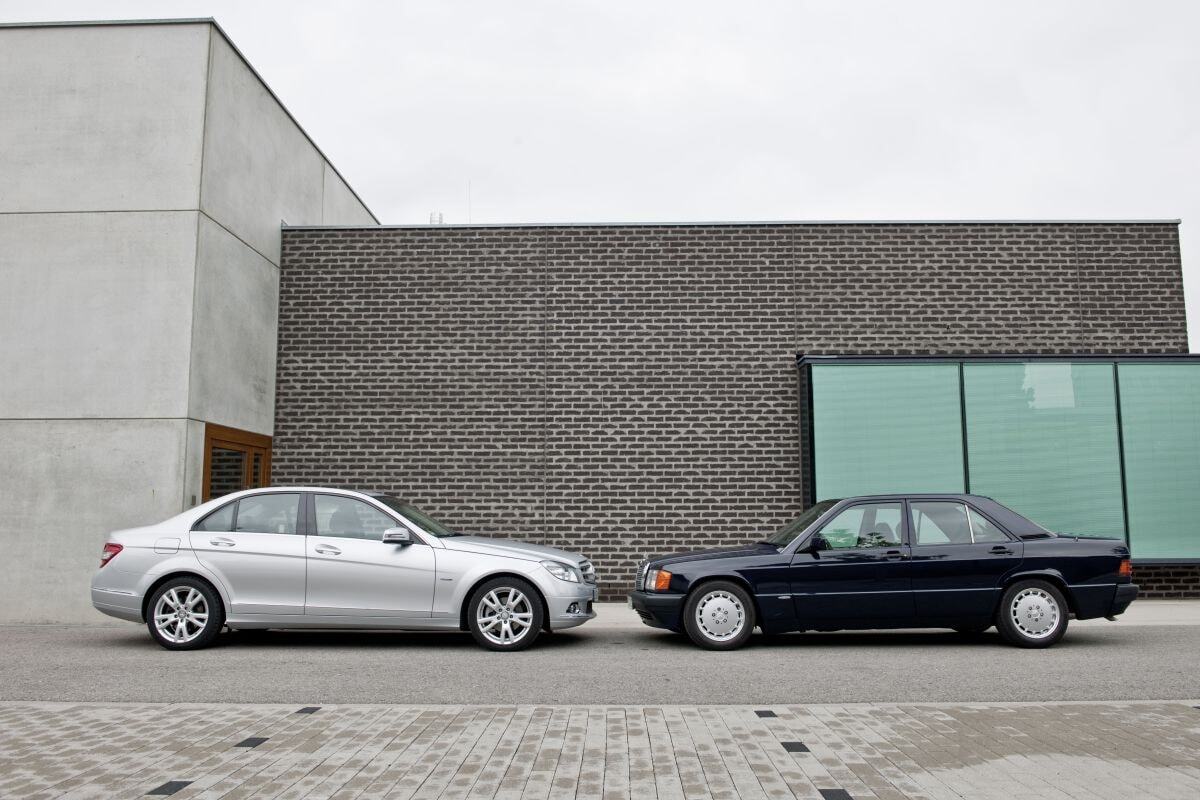
BlueEfficiency on the car
With this 190 D BlueEfficiency, Mercedes-Benz provides fuel for the often-heard discussion that cars have barely become more efficient after over a century. First, we should note that the converted 190, despite a huge power increase with the new engine, is significantly more efficient than an original 190 D. Furthermore, it’s remarkable that the converted car, despite a much higher drag coefficient (0.34 for the 190 vs. 0.27 for the C-class), is also more efficient than the C-class, because especially at higher speeds, air resistance is a determining factor. The fact that fuel consumption is nevertheless lower is partly because the 190 is significantly lighter. The 190 lacked all sorts of things that we today (2009, that is) can’t imagine living without. The 190 had no airbags, side impact resistance was considerably lower, the air conditioning was much less refined, and we could go on to explain a weight difference of 535 kg (1,110 kg for a 190 D and 1,645 kg for a C250 CDI). It turns out we’ve simply become more demanding in various respects, and that sometimes wipes away some of the developments made by engine builders. But then again, with a modern C-class you can enter all German city centers, something that’s not possible with an old 190 D. Incidentally, it is possible with this blue converted 190, because it also has all the exhaust gas aftertreatment systems of the C250 CDI BlueEfficiency on board, which is why there’s a neat green sticker on the windshield. Simply because it can.